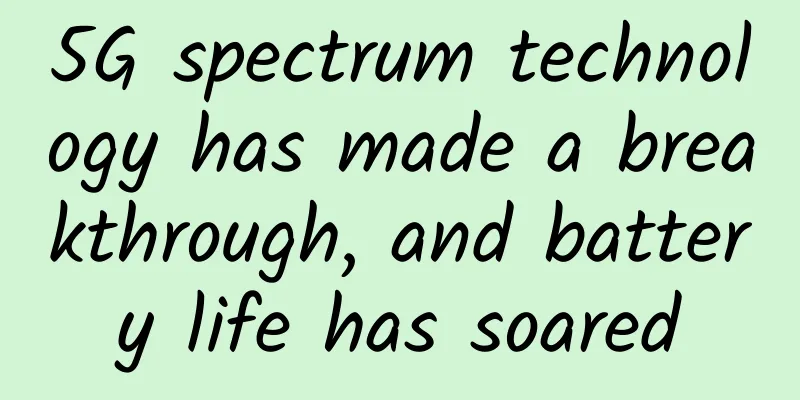5G spectrum technology has made a breakthrough, and battery life has soared

|
Improving battery life has been a challenge for all IoT application industries. Researchers have now built a new component that will more efficiently allow access to the highest 5G frequencies, extending device battery life and speeding up the speed at which we can process content such as high-definition streaming. How does it work? Smartphones are equipped with switches that perform multiple tasks. One of the main tasks is switching between networks and spectrum frequencies: 4G, Wi-Fi, LTE, Bluetooth, etc. Current radio frequency (RF) switches that perform this task are always on, which consumes precious processing power and battery life. A team from The University of Texas at Austin and the University of Lille in France has found a solution. "The switch we developed is more than 50 times more energy efficient than the switches used today," said Deji Akinwande, a professor in the Department of Electrical and Computer Engineering in the Cockrell School of Engineering, who led the research. "It can transmit HDTV streams at frequencies of 100 GHz, which is unheard of in broadband switching technology." The new switch remains closed unless other steps are actively helping the device jump between networks, saving battery life for other processes. They also demonstrated the ability to transfer data at baseline speeds above 5G speeds. The Defense Advanced Research Projects Agency (DARPA) has been pushing for years to develop "near-zero-power" RF switches. Previous researchers have found success at the lower end of the 5G spectrum, where speeds are slower but data can travel longer distances. It’s the first switch that can function across the spectrum, from low-end gigahertz (GHz) frequencies to high-end terahertz (THz) frequencies, and could one day be key to the development of 6G. The technology's impact extends beyond smartphones. Satellite systems, smart radios, reconfigurable communications, the "internet of things" and defense technology are all examples of other potential uses for these switches. The research results have been published in the journal Nature Electronics. |
<<: Satellite Internet or 5G, which is cheaper?
>>: Are operators “breaking away from” the old ways? 2G/3G networks will eventually leave the stage
Recommend
80VPS: Hong Kong server monthly payment starts from 420 yuan, US CN2 monthly payment starts from 650 yuan, Hong Kong/US cluster server starts from 750 yuan
I have shared information about 80VPS many times ...
Huawei launches innovative Enterprise Intelligence (EI) for the first time HUAWEI CLOUD is committed to achieving new value
Today, at the first day plenary session of HUAWEI...
Japan and Finland jointly develop 6G technology, Nokia will participate
Recently, foreign media reported that industry gr...
Intel and XSKY Debut at 2019 China Data and Storage Summit
On December 3-4, the 2019 China Data and Storage ...
McKinsey: These ten trends are enough to subvert the existing IT infrastructure
When it comes to hardware and IT infrastructure, ...
Is Bluetooth mesh the future of smart buildings?
Smart buildings, whether residential, commercial ...
The Evolution of Ethernet: From 10BASE-T to 40GBASE-T and Beyond
The Evolution of Ethernet: From 10BASE-T to 40GBA...
TCP/IP Appetizer: HTTP
[[381273]] This article is reprinted from the WeC...
Ruijie Cloud Desktop solves financial development and testing problems and is praised by Yixing Rural Commercial Bank!
Technology drives the transformation of the times...
Avoiding connection problems: Maximum distances Ethernet cables should not exceed
Ethernet cables are a common way to connect devic...
Do you know all the things you need to pay attention to when using threads?
[[344283]] This article is reprinted from the WeC...
DogYun New Year's Day promotion: 30% off on Dynamic Cloud, 20% off on Classic Cloud, 100 yuan off on Dedicated Server per month, 50% off on Lucky Wheel
DogYun (狗云) hasn't offered discounts for more...
5G will become a necessity in our future
Most of the 5G networks currently available are n...
The pain of 5G indoor distribution! One million devices face replacement and transformation
Indoor coverage is the new battlefield for 5G. Mo...
How to deal with the impact of digital transformation on the network
Digital transformation has increased the importan...









